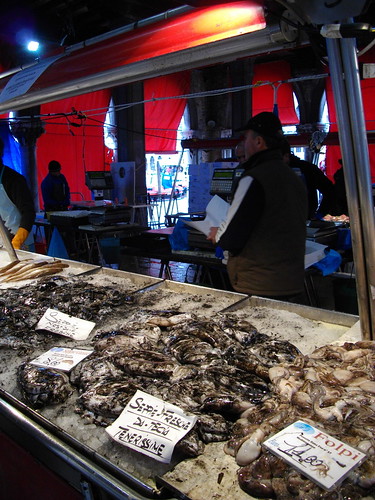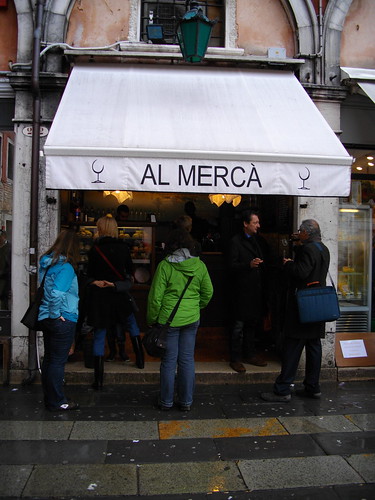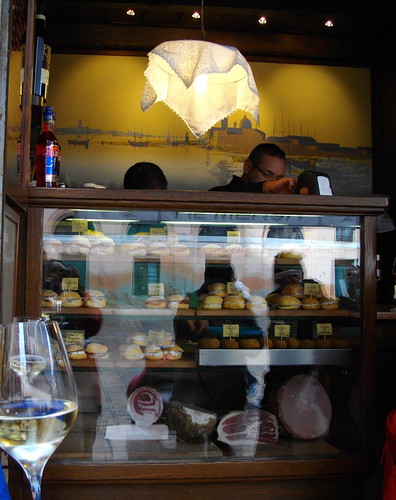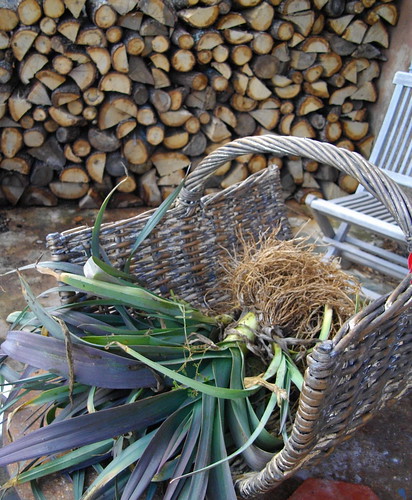(Adapted from an article that appeared in the BBC Music Magazine in 2005.)
It is the first day of the music course. In the bare fluorescent-lit schoolroom are twelve roll-top desks pushed aside and four young string players playing a Brahms quartet in front of a chalk board. Immediately I sit down to coach them I am struck by each of the musicians' physical differences. Although they are playing the same score, it is as if, in this small room, we have the gestural equivalent of Swan Lake, The Sex Pistols, The Gypsy Kings, and the recent New Age title, Solo Didgeridoo, competing for airspace.
Kirsty
Kirsty, the cellist in the quartet, is achingly pretty, willow-like, with long legs emerging from a flowing skirt and ending in petite court shoes. Her long-lashed unblinking eyes constantly scan the room for approval. An eager student, her positive attitude is reflected in her posture, which is projected forward and wide open in the front.
'I am going to be a professional cellist!' Kirsty tells me in the rehearsal break, and I don't know why I feel sad.
After the break I observe and listen further. Kirsty reminds me of a ballet dancer with her arms in third position. She has a long endpin which means the contact point between her bow and her cello is far from her body and the natural swing of her arm. Her rhythm is somewhat unreliable and her bow arm, though elegant, shakes. Consequently her sound is airy. I notice that she seems happiest in the upper half of the bow where she does not have to deal with the natural mass of her arm. When I stand behind her I cannot help feeling that the back of her is like a shadow of the front. Where the front is animated, brimming over, tilted forward and convex, the back appears to be lifeless, hollow, concave and defeated.
Towards the end of the first day's session Kirsty collapses with excruciating lower back pain and has to be taken to the infirmary.
During the week's coaching I try and bring Kirsty's attention to her back, and to the inside rather than the outside of her. I help her find a sitting position which is centred and resting on her sitting bones. I get her to close her eyes and listen rather than look in order to be together with her colleagues. With her eyes closed I ask her to observe her breathing and what it does to her body, in particular the back of her rib cage. Of her own accord Kirsty experiments with a lower endpin and it seems, by Friday, that her back pain is easing off. Her rhythm has improved and her sound has more body.
Some of the questions that arise for me as I work with Kirsty are:
1. Is Kirsty's projection forward in space connected to her being projected forward into her future as a professional cellist?
2. Could giving attention to her back, in helping her become more centred physically, help her become more present?
3. Could it be that looking and listening outwards for approval from her colleagues and teachers is sabotaging Kirsty's inner voice?
I look again at the four musicians and wonder what might be influencing their posture, their rhythm, their tone, their listening: Do they feel 'behind' a sibling? pushed 'down' by Mum? Are they trying to 'rise' to Dad's standards? Are they told they are beautiful, slow, quick, fat, loud, shy, elegant? That they are a terrible dancer or a good leader?
Andrea and Faith
Andrea, the second violinist, holds her violin low and angled downwards like a folk musician, whereas Faith, very much the soloist and the leader, holds her instrument high and angled upwards. It turns out both these postures have advantages and disadvantages in the two sections of the last movement of the quartet.
Johannes Brahms was strongly influenced by Hungarian folk music, and in the first section Andrea, breathing and moving easily in her baggy combat trousers, has the advantage, grasping the punchy syncopations like a barefoot drummer. Faith, meanwhile, is having difficulty touching the earthy quality of the music. With her violin angled upwards, the natural swing of her arm round her torso is inhibited. She breathes not from her abdomen (which, anyway, is squished by tightly fitting jeans) but in shallow gasps. The silver cross resting on her clavicule jogs up and down as she struggles with the short rhythmic phrases.
First of all I help Faith to breathe from her abdomen. This does involve loosening a button or two but we are all girls in the room so, with good humour, she obliges. Next I encourage her to feel the musical impulses coming from the same place. I ask her to take the lead from her colleague and let her violin point less to the heavens and more towards the earth. As she starts to feel the uninhibited swing of her arm, Faith's sound doubles and her rhythm begins to pulsate. During the week a new way of quartet playing emerges that does not involve three people following the nod of one other person but rather, four people connecting, through their breath, to the same shared impulse.
Some of the questions that arise for me as I work with Faith are:
1. Is the high angle of Faith's violin connected to being a leader and her desire to set a high example?
2. Is Faith an older or more dominant sibling and is someone at home getting squashed?
3. Does Andrea's earth-bound attitude represent a part of Faith's shadow?
We arrive at the lyrical transformation of the theme into a legato phrase that seems never to land as it reaches up and up into the heavens. Whilst Andrea is fighting against gravity to keep the melody going Faith is spinning the phrase out into eternity. During the week I encourage Andrea take inspiration from Faith and lift her fiddle to free the horizontal plane of her arm movement, to open up in the front of her body and allow more scope for long phrases. At one point, like actors changing masks, I get the two firls to swap shoes: Faith's strappy sandals with their little heel for Andrea's Nikes. As, gradually, Andrea takes off and begins to fly with the long phrases, she and Faith begin to rise and dip in perfect harmony through Brahms' music.
Some of the questions that arise for me as I work with Andrea are:
1. Is Andrea's second fiddle persona influencing her downward posture?
2. Does she find herself in a supportive rôle at home and does this prevent her from flying?
3. Is the ambitious soloist persona (represented here by Faith) part of Andrea's shadow?
Greta
Greta is not a pretty girl. In fact I have to admit I feel sorry for her. She slouches. Her knees are fat at the end of her short skirt. When the phone in her breast pocket lights up with text messages she exchanges it for her bow (regardless of whether or not she is in the middle of a phrase) and taps out replies with more bounce than she puts into her quavers. The thing about Greta is that I keep on forgetting to give her attention. If this were a therapy session and this my 'transference', I would deduct that Greta is simply not there.
When, in the break, I ask Greta what brought her to the course she says 'I was supposed to be on the violin but they didn't have any places left. I'm just filling in for a violist who cancelled.'
The first thing I do (when indeed I do remember to give some attention to her) is to tell Greta the story of when I first worked with Nicholas Harnoncourt and how, despite the fact that we could all play our notes fine and it was the bloody violins that were having problems, he spent three hours working with the violas and cellos, trying to find the perfect buoyant engine. After these three hours, even though not one violin bow had touched the string, all the violinists' problems, both technical and musical, disappeared. Faith, Kirsty and Andrea smile at this anecdote but Greta's face remains unmoved. It is only when I ask her what, after all, is more exciting in a sandwich, the bread or the filling, that she smiles for the first time. And when she smiles she is not only there but she is beautiful! As we work on her running quavers as the life-blood coursing through the music Greta seems to creep back in to the room. With a vital rôle to play she becomes animated.
Some of the questions that arise for me as I work with Greta are:
1. How can Greta bring her self to a rôle for which she has no feeling?
2. I wonder if Greta is a middle child and/or often ignored.
3. If unchecked, does Greta risk going through life as an extra player?
Of all the four musicians, I find myself relating most strongly to Greta and to Kirsty. Although the older child, I was slow to learn and my brother, a violinist, was quick and brilliant. Desperate to please and to be approved of, especially as there were fragile family relationships seemingly dependent on my success, I was convex in the front of my body and my eyes were wide open. Thus I did not have any connection to my inner voice, to my back, or to the ground. Every time I felt insecure I made my endpin longer and became even more ungrounded. With no attention given either in my family or at the specialist music school to sport or the physicality of playing, I was completely disembodied. This lead to problems with stage fright. I longed to soar like Faith or rock like Andrea but instead I ended up filling in gaps in concerts quivering my way through 'easy' slow movements. I then became an extra player in many orchestras and chamber groups, becoming a member of (a part time) orchestra only in my late twenties.
Now, of course, I realize that there are many different ways of learning and that mine, though 'slow', was also deep. Through meditation I have become more attuned to my inner voice, and indeed have learned to recognize the voices that are distracting me from it. Thanks to the work-out wake-up call I had in an American university and to yoga and Alexander Technique I have become more embodied and no longer suffer from stage fright. Though when I was these girls' age I never thought I would, I can, at last, both rock and soar. What occurs to me while I am coaching them is that music training can be a training in so much more than just playing music. It can be an opportunity to jump out of the moulds made for us by family structures and by our social, economic or political circumstances, an opportunity for rockers to soar and soarers to rock, for laggers to run and runners to chill, for leaders to follow and followers to take to the wind. Our posture, so long as it is always in motion, can be an ever changing expression, not just of our own personality, but of the human psyche.
(All characters in this article are fictional.)










